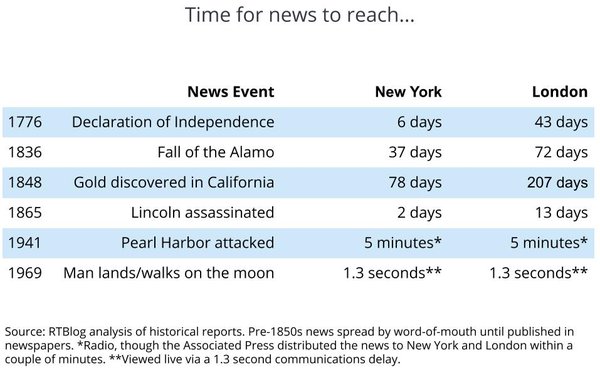
On this Presidents' Day, I'd like you to think about how the
speed of media has changed since our first President, and what implications that holds for a republic that relies on informed citizens.
When our founders declared independence from the British
on July 4, 1776, it took six days before news of that event in Philadelphia was published in newspapers in New York -- and 43 days before it was published in London.
As America spread across
the frontier from the original continental states, the dissemination of news actually slowed down with geography.
It took 37 days for news about the fall of the Alamo to reach New York, and 72
days to reach London in 1836.
It took 78 days for news about the discovery of gold in California to reach New York, and 207 days to reach London.
The invention of the telegraph and the
laying of undersea cables in the 1850s accelerated the spread of news, but it still took two days for news about Lincoln's assassination to get published in New York, and 13 days in London.
advertisement
advertisement
Broadcast media dramatically closed the gap in the 20th century, enabling news about the Japanese attack on Pearl Harbor to be spread in minutes By the 1960s, satellite communications enabled the
entire world to watch man land and walk on the moon in near-real-time, albeit with a 1.3-second communication delay.
Today, major news events now seem to spread before they even happen -- or
even if they do not happen.
Numerous studies have already proven that disinformation, misinformation, propaganda, and "fake news" spread faster than real news. Negative news also moves faster
than neutral or positive news.
The speed of information access is worth remembering on this Presidents' Day, because I don't think it was something our founders accounted for, especially as we
head into one of the most consequential election years since we were founded.